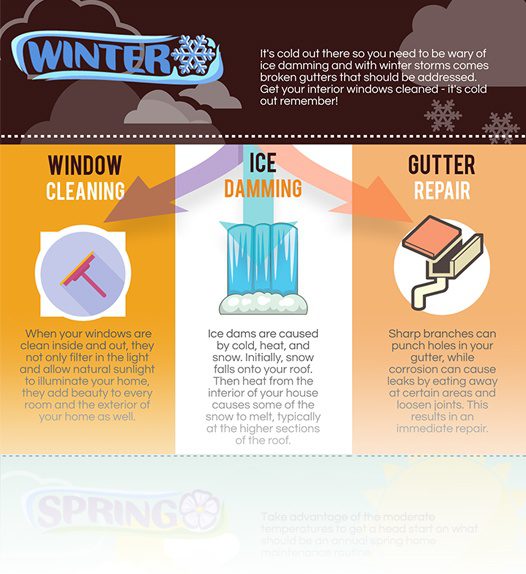Get The Fundamental Stress Cleaning Techniques Specifically Made For Different Surface Area Kinds To Acquire Amazing Results-- Discover The Secrets To Achieving An Excellent Coating
Get The Fundamental Stress Cleaning Techniques Specifically Made For Different Surface Area Kinds To Acquire Amazing Results-- Discover The Secrets To Achieving An Excellent Coating
Blog Article
Web Content Writer-Lassen Nixon
When it concerns pressure washing, the strategy you select can make all the distinction in achieving a clean, streak-free finish. You might locate that tough surface areas, like concrete, call for a various approach than softer products, such as wood or vinyl. It's important to adapt your methods to the surface area type to avoid damages while optimizing cleansing effectiveness. So, what are the best techniques for every surface area, and exactly how can you guarantee you're using the appropriate settings and tools for the task? Let's explore what you need to know to get the best outcomes.
Difficult Surfaces
When it concerns pressure washing hard surfaces, prep work is essential. Before you even think about pulling out the stress washer, put in the time to get rid of the area of any type of particles, furniture, or obstacles. You don't want anything getting in your means or potentially harmful your devices.
Next off, evaluate the surface for any kind of splits or damage; this will assist you identify the right approach and stress settings.
Once you've prepared the location, it's vital to choose the ideal nozzle. For hard surfaces like concrete or brick, a narrow nozzle (15 or 25 degrees) functions best to supply a focused stream of water that can successfully get rid of gunk and discolorations. Constantly start at a distance and progressively relocate closer to stay clear of any type of surface damages.
As you begin washing, keep the stick moving to prevent touches and over-saturation. It's additionally helpful to work from the top down, permitting dirt and debris to wash away normally.
Ultimately, remember to wash the surface thoroughly after cleansing to eliminate any type of leftover cleaning agent. With these strategies, you'll achieve a clean and refreshed appearance on all your hard surfaces.
Soft Surfaces
Stress cleaning soft surfaces calls for a gentler strategy to shield them from damage. Whether you're cleaning your deck, patio furnishings, or exterior siding, utilizing too much pressure can cause dents, scratches, or perhaps irreversible damage.
Begin by picking a low-pressure nozzle, preferably a 25-degree or larger spray pattern, to spread the water a lot more carefully.
Before you start, it's vital to pre-treat any kind of stains with a suitable cleaning remedy. This action allows the cleaner to pass through the dirt and gunk, making it simpler to wash away without rubbing also hard.
Always apply the option from all-time low as much as avoid spotting.
When you start stress washing, maintain a distance of at the very least 12 to 18 inches from the surface area. Move your stick in a sweeping activity, maintaining it alongside the surface area to stay clear of focused pressure on one place.
visit my home page after cleansing to get rid of any type of residual cleanser.
Finally, check the surface area for any kind of missed places and duplicate the process if needed. By following these actions, you can efficiently tidy soft surfaces while preserving their stability and look.
Specialized Surfaces
Cleaning up soft surfaces calls for care, but specialty surfaces require much more attention to detail. When you take on these surfaces, like delicate timber, tarnished concrete, or certain sorts of exterior siding, utilizing the right pressure cleaning techniques is vital to prevent damages.
Initially, evaluate window washing company . As just click the up coming post , treated wood can frequently endure modest pressure, but softer woods like cedar might need a reduced setting. Constantly start with the lowest pressure and slowly boost if required.
For stained concrete, utilize a follower spray nozzle and preserve a constant distance to avoid etching the surface.
When taking care of surface areas like vinyl exterior siding or painted surfaces, a vast spray pattern assists distribute the pressure evenly, safeguarding the finish.
It's also smart to utilize detergents especially made for specialty surfaces. They can enhance cleaning without jeopardizing the material.
Rinse extensively after cleaning to eliminate any deposit, as it can lead to staining or degeneration gradually.
Conclusion
In conclusion, understanding pressure cleaning methods for different surfaces can make all the distinction in your cleaning results. For hard surface areas, stick to narrow nozzles and a top-to-bottom method, while soft surface areas require a gentler touch with broader nozzles. Do not neglect to pre-treat discolorations and rinse thoroughly to stay clear of residue. By adjusting your approaches to every material, you'll not only attain a cleaner finish but likewise secure the stability of your surfaces. Satisfied cleaning!
